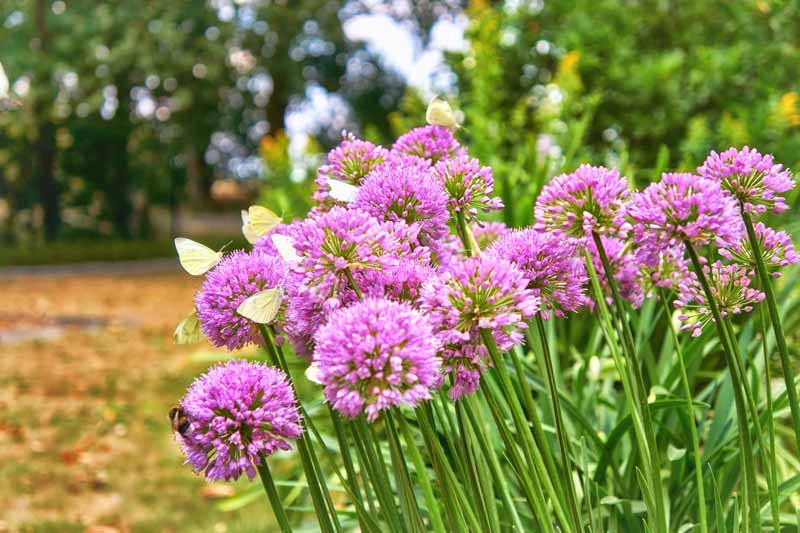Seasonal Agapanthus Treatment: Preparing for Winter Season and Summertime
Seasonal Agapanthus Treatment: Preparing for Winter Season and Summertime
Blog Article
Mastering the Art of Agapanthus Treatment: Necessary Actions for Healthy Development and Vivid Blooms
In the world of cultivation, the growing of agapanthus stands as a satisfying venture for those that seek to support these classy flowering plants. With their striking blossoms and graceful foliage, agapanthus has caught the focus of garden enthusiasts worldwide. However, attaining optimal development and vivid blossoms needs a nuanced method that includes numerous essential actions. From selecting the ideal variety to mastering trimming techniques, the journey towards growing flourishing agapanthus plants is diverse and holds the essential to opening the complete potential of these herb gems.

Choosing the Right Agapanthus Selection

When choosing the best Agapanthus range for your garden, take into consideration aspects such as climate viability, flower color, and development practice. In addition, take into consideration the environment in your region to guarantee the Agapanthus variety you choose can prosper in your details problems. Recognizing the growth routine of different Agapanthus ranges is vital for correct positioning within your garden.
Suitable Planting Problems
Considering the ideal environmental needs is essential for successful Agapanthus growing. Agapanthus grows in well-draining soil with a somewhat acidic to neutral pH level. When growing, choose a place that obtains complete sunlight to partial color. In hotter environments, providing some mid-day color can prevent scorching of the fallen leaves. Agapanthus plants are sensitive to cool temperature levels and must be protected from frost throughout winter months.
To ensure healthy and balanced growth and lively blossoms, plant Agapanthus light bulbs at a deepness of about 2-4 inches and room them 8-12 inches apart. Mulching around the base of the plants assists preserve dampness and subdues weed development.
Watering and Feeding Tips
Preserving proper wetness levels and offering necessary nutrients are key elements in the care regimen for Agapanthus plants. When it comes to watering Agapanthus, it is critical to strike a balance. These plants choose continually wet dirt yet are at risk to root rot if overwatered.
Feeding Agapanthus is vital for promoting healthy development and respected blossoms. Use a well balanced plant food, such as a 10-10-10 formula, in the very early springtime as new growth arises. Repeat this application every 6-8 weeks throughout the expanding season. Stay clear of too much fertilizing, as it can bring about rich vegetation at the expense of blooms. Always comply with the producer's directions for appropriate dilution and application techniques. By following these watering and fertilizing ideas, you can ensure your Agapanthus plants prosper and create lively, lasting blooms.
Trimming Techniques for Agapanthus
Trimming Agapanthus plants at the suitable times and with appropriate techniques is crucial for keeping their health and promoting optimal development and blooming. The suitable time to prune Agapanthus remains in late winter or early spring before new growth emerges. Start by getting you can look here rid of any type of yellowing or dead leaves near the base of the plant. Cut them as close to the ground as possible without damaging the arising shoots.
For flowered stems, wait till the blossoms have actually withered and after that trim them back to the base. This not just cleans the plant's appearance yet additionally motivates the development of new blossom buds. Deadheading spent blossoms can likewise reroute the plant's power right into generating even more blooms as opposed to establishing seeds. However, if you intend to collect seeds for proliferation, leave some blossoms to fully grown and dry on the plant.
Remember to make use of clean, sharp tools to make accurate cuts and lower the threat of presenting conditions. Agapanthus. Regular trimming will aid keep your Agapanthus looking healthy and neat while making certain a plentiful display screen of stunning flowers
Managing Common Insects and Illness
After ensuring proper trimming strategies for Agapanthus, it is necessary to attend to typical pests and conditions that can influence the wellness and vitality of these plants. One typical pest over at this website that affects Agapanthus is the Agapanthus gall midge.
Another common issue is fungal leaf spot, which presents as dark lesions on the fallen leaves. To avoid fungal illness, make sure excellent air blood circulation around the plants, avoid above watering, and remove any kind of contaminated fallen leaves without delay. Furthermore, Agapanthus plants can experience origin rot if they are grown in inadequately draining pipes dirt. To avoid this, plant Agapanthus in well-draining dirt and stay clear of overwatering. By being alert and taking index punctual action versus conditions and bugs, you can help your Agapanthus plants grow and produce vivid blooms.

Conclusion
To conclude, understanding the art of agapanthus treatment entails picking the ideal selection, supplying optimal planting problems, appropriate watering and feeding, ideal trimming strategies, and resolving usual insects and conditions. By following these important actions, you can guarantee healthy development and vivid blossoms for your agapanthus plants. Remember to routinely keep an eye on and keep your plants to promote their total wellness and long life.
To ensure healthy development and lively blooms, plant Agapanthus light bulbs at a depth of regarding 2-4 inches and area them 8-12 inches apart. By following these watering and fertilizing ideas, you can guarantee your Agapanthus plants thrive and produce lively, resilient flowers.
One usual pest that impacts Agapanthus is the Agapanthus gall midge. In addition, Agapanthus plants can endure from root rot if they are grown in poorly draining dirt. By complying with these necessary steps, you can make sure healthy and balanced growth and dynamic flowers for your agapanthus plants.
Report this page